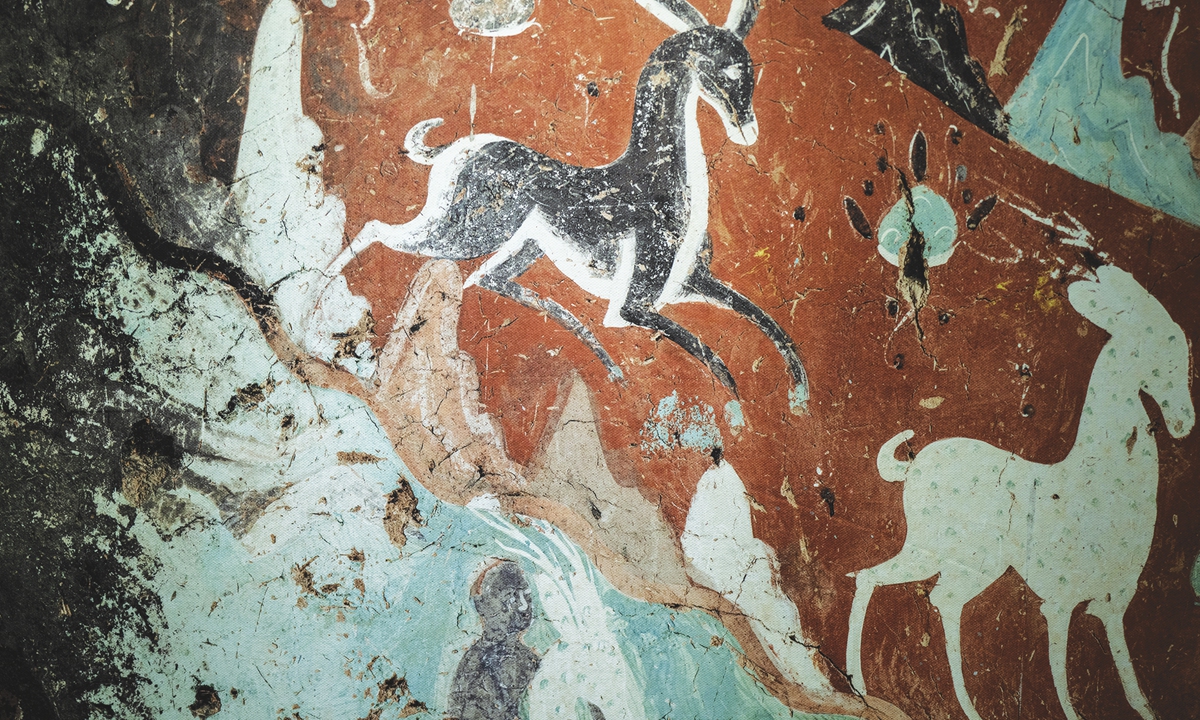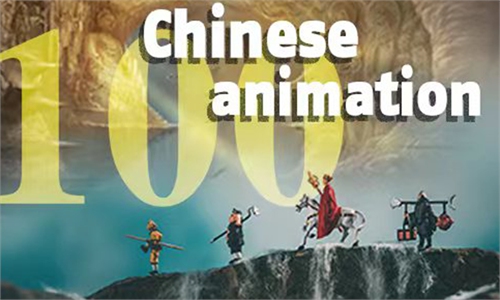ARTS / ART
Chinese animation 100

The Nine-Colored Deer painting in the Mogao Caves in Dunhuang, Gansu Province Photo: IC
Dunhuang-inspired Chinese animated film 'The Nine-Colored Deer'The Nine-Colored Deer is a 24-minute Chinese animated film produced by the Shanghai Animation Film Studio and released in 1981.
It is a beautiful film with a unique art style that resembles the frescoes found inside the Mogao Caves, a World Cultural Heritage Site in Dunhuang, Gansu Province.
The film tells the story of a magical nine-colored deer who saves a drowning potion merchant. In exchange, the merchant promises not to reveal the deer's whereabouts, but he later breaks his vow by helping the emperor's hunters hunt the deer down. Surrounded by hunters, the deer manifests a halo of divine light and all their arrows turn to dust. The ungrateful merchant gets his payback and falls into a lake.
The story of the film is based on "Jataka of the Deer King," a fresco discovered in the Mogao Caves. It promotes the Buddhist concept of "benevolence and good deeds will bring good retribution; ungratefulness and evil deeds will incur severe punishment."
It is the only animal jataka illustration - depictions of the Buddha's previous lives - at the Mogao Caves.
To study the art of the Dunhuang frescos, the production crew traveled to Dunhuang, where they lived in the Mogao Caves for 23 days. During this time, they would wake up at 6 am and draw sketches until the night fell.
At night, the artists gathered around, exchanging their advice on sketching techniques.
According to Feng Jiannan, who worked on the scene design for the film, he finished 21 copies of the Dunhuang frescoes and five books of sketches during the short stay in Dunhuang.
"The time spent in the caves was tough, but they became a great inspiration for my lifelong works," the 82-year-old artist said.
Though only 24 minutes long, the production crew made nearly 20,000 drawings for the film, including more than 200 pictures for backgrounds.
Global Times

